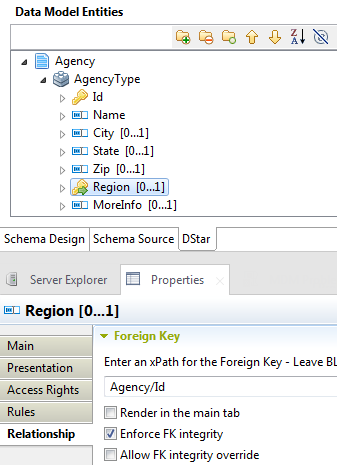Enabling foreign key integrity checking
You can enable foreign key integrity checking to manage whether users are allowed
to delete a record that is linked to another record through a foreign key. By default,
this is not allowed.
About this task
To enable foreign key integrity checking:
Procedure
Did this page help you?
If you find any issues with this page or its content – a typo, a missing step, or a technical error – let us know how we can improve!

